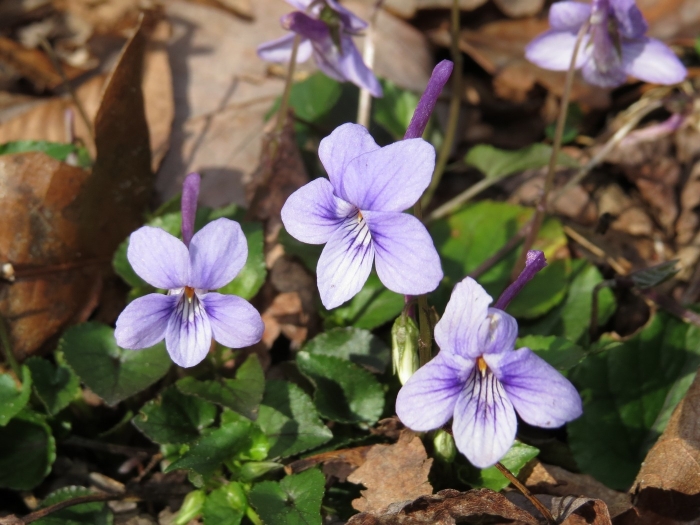Longspur Violet
(Viola rostrata)
Longspur Violet (Viola rostrata)
/
/

Evan M. Raskin
CC BY 4.0
Image By:
Evan M. Raskin
Recorded By:
Copyright:
CC BY 4.0
Copyright Notice:
Photo by: Evan M. Raskin | License Type: CC BY 4.0 | License URL: http://creativecommons.org/licenses/by/4.0/ | Rights Holder: Evan M. Raskin | Publisher: iNaturalist | Date Created: 2018-04-01T10:24:21-07:00 |










































Estimated Native Range
Summary
Viola rostrata, commonly known as Longspur Violet, is a deciduous perennial herb native to rich, moist deciduous forests, often found in the understory and along stream banks in the Eastern United States. It typically grows to a height of 0.5-0.7 feet (15-21 cm) and a width of 0.3-0.5 feet (9-15 cm). The plant has a clumping form with heart-shaped leaves and is notable for its distinctive purple flowers, which bloom in the spring and early summer. The flowers are characterized by their long, nectar-bearing spurs and are quite showy, attracting pollinators such as bees and butterflies.
Longspur Violet is valued for its ornamental flowers and its ability to thrive in shaded conditions, making it an excellent choice for woodland gardens, shaded borders, and naturalized areas. It is relatively low-maintenance, requiring medium amounts of water and well-drained soils rich in organic matter. While it prefers part shade or full shade, it can tolerate morning sun if kept moist. This violet is not typically associated with serious diseases or pests, but can be susceptible to leaf spots and root rots if conditions are too wet. It is also deer-resistant, which is a notable benefit for gardeners dealing with wildlife pressure.CC BY-SA 4.0
Longspur Violet is valued for its ornamental flowers and its ability to thrive in shaded conditions, making it an excellent choice for woodland gardens, shaded borders, and naturalized areas. It is relatively low-maintenance, requiring medium amounts of water and well-drained soils rich in organic matter. While it prefers part shade or full shade, it can tolerate morning sun if kept moist. This violet is not typically associated with serious diseases or pests, but can be susceptible to leaf spots and root rots if conditions are too wet. It is also deer-resistant, which is a notable benefit for gardeners dealing with wildlife pressure.CC BY-SA 4.0
Plant Description
- Plant Type: Herb
- Height: 0.5-0.7 feet
- Width: 0.3-0.5 feet
- Growth Rate: Moderate
- Flower Color: Purple
- Flowering Season: Spring, Summer
- Leaf Retention: Deciduous
Growth Requirements
- Sun: Part Shade, Full Shade
- Water: Medium
- Drainage: Medium
Common Uses
Bee Garden, Butterfly Garden, Deer Resistant, Low Maintenance
Natural Habitat
Rich, moist deciduous forests, often found in the understory and along stream banks
Other Names
Common Names: Long-Spur Violet, Long-Spurred Violet, Violette À Long Éperon, Violette Long-Éperon, Violette Rostrée, Nagahashi-Sumire
Scientific Names: , Viola rostrata, Viola rostrata var. rostrata, Viola rostrata f. phelpsiae, Lophion rostratum, Viola rostrata f. trirostrata, Viola rostrata var. elongata, Viola rostrata var. phelpsiae,
GBIF Accepted Name: Viola rostrata Pursh